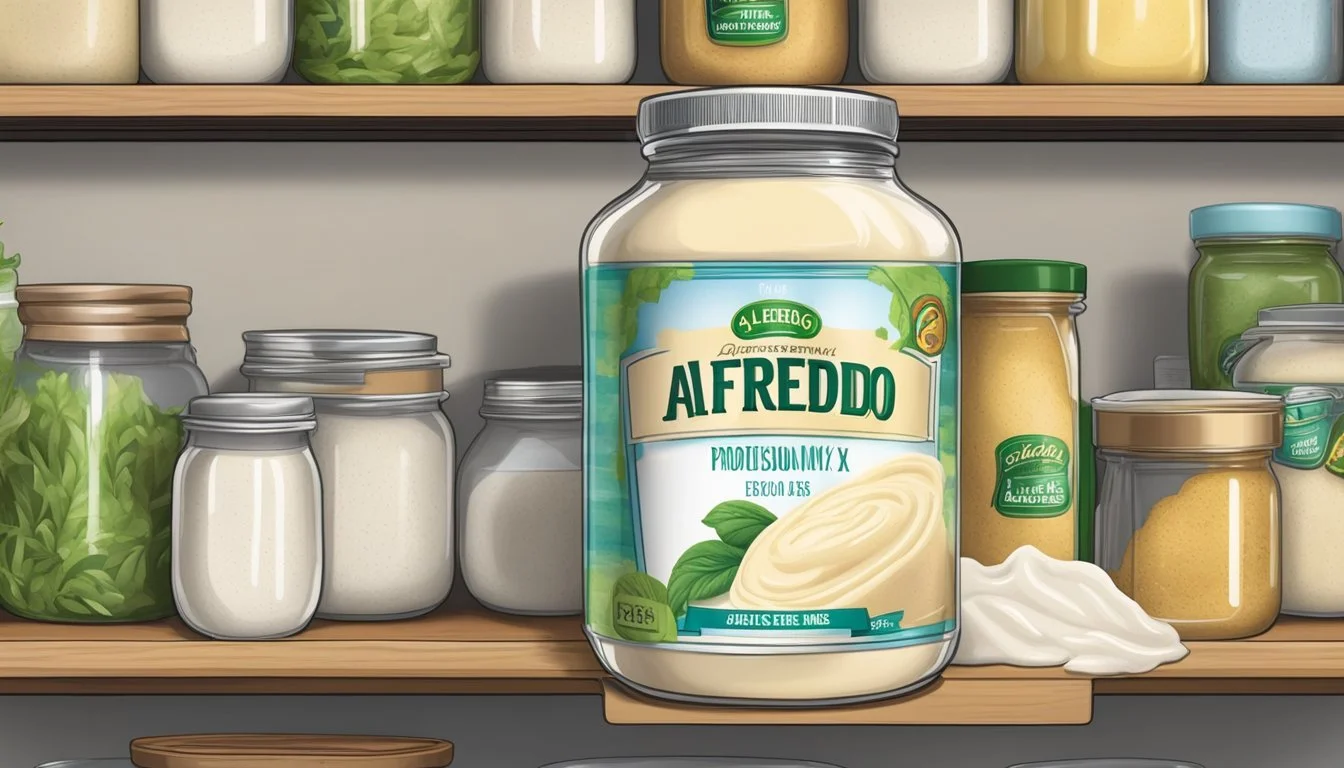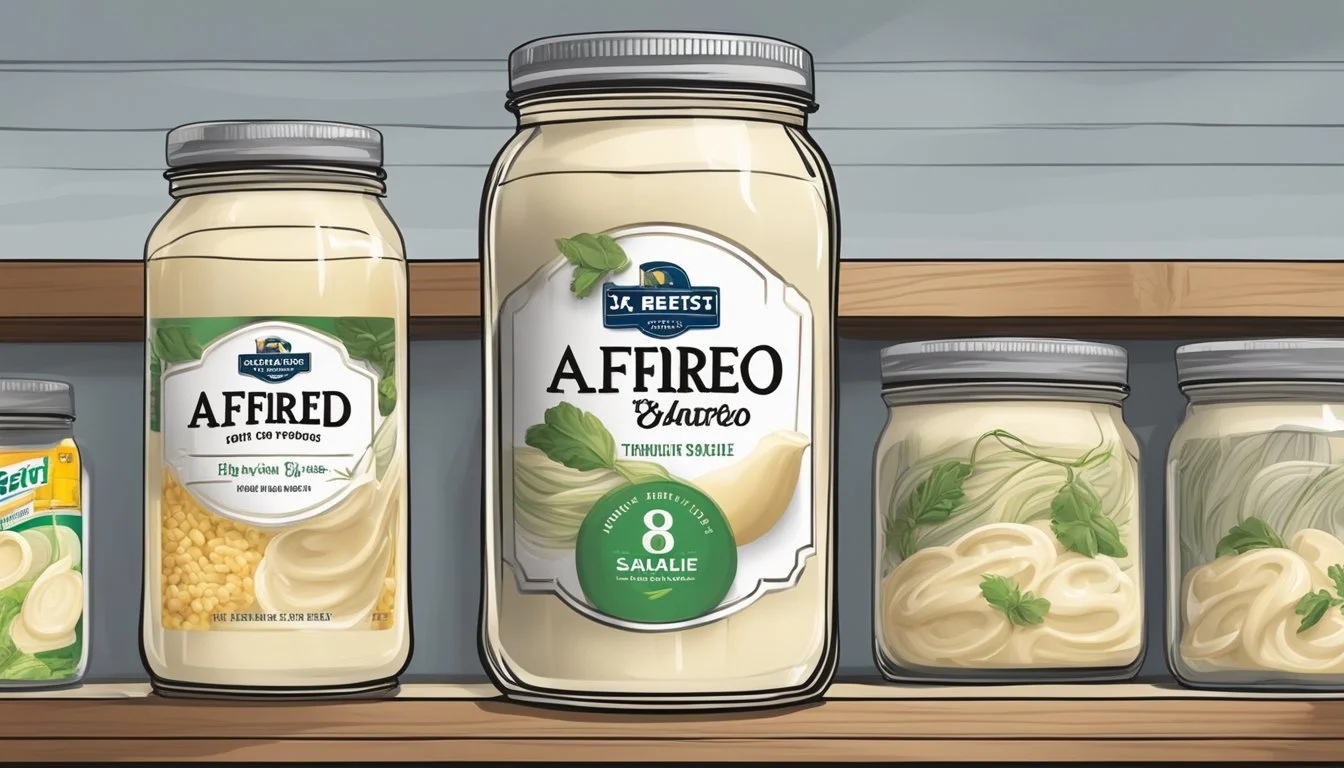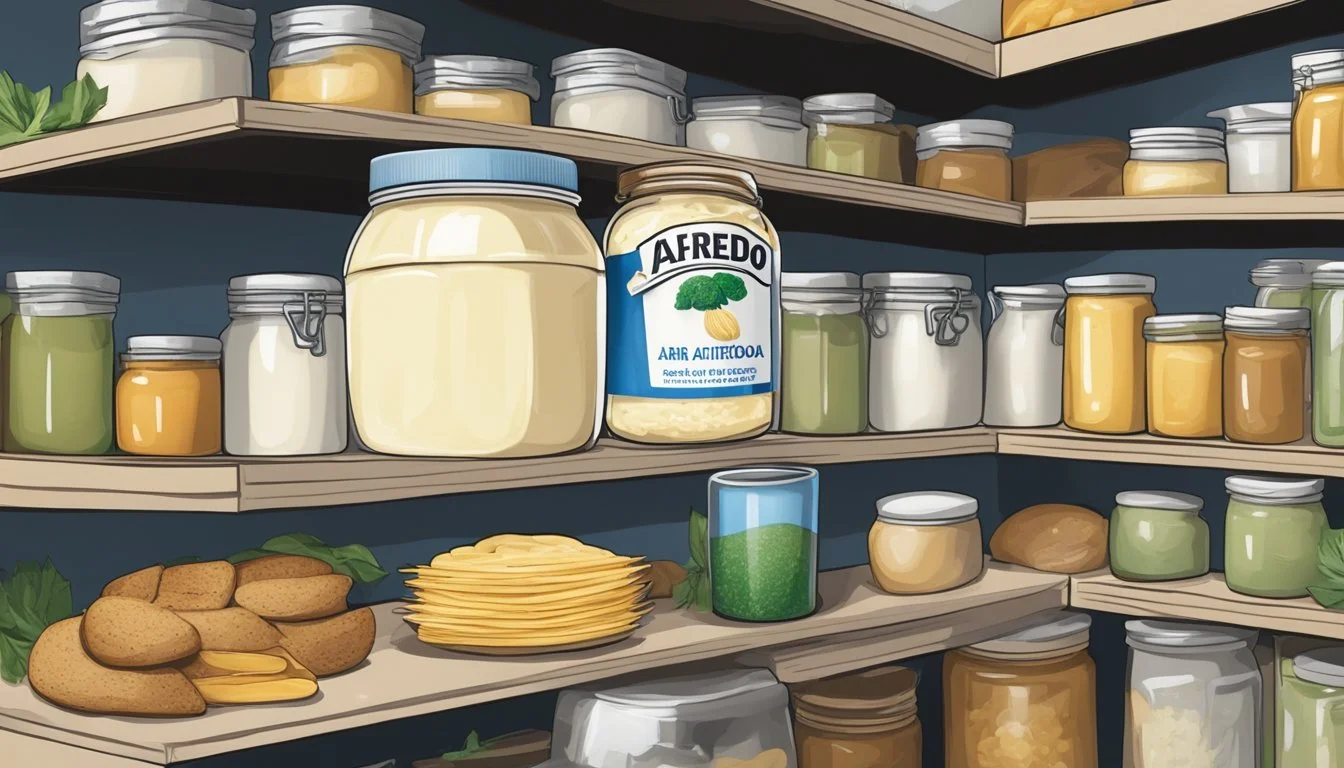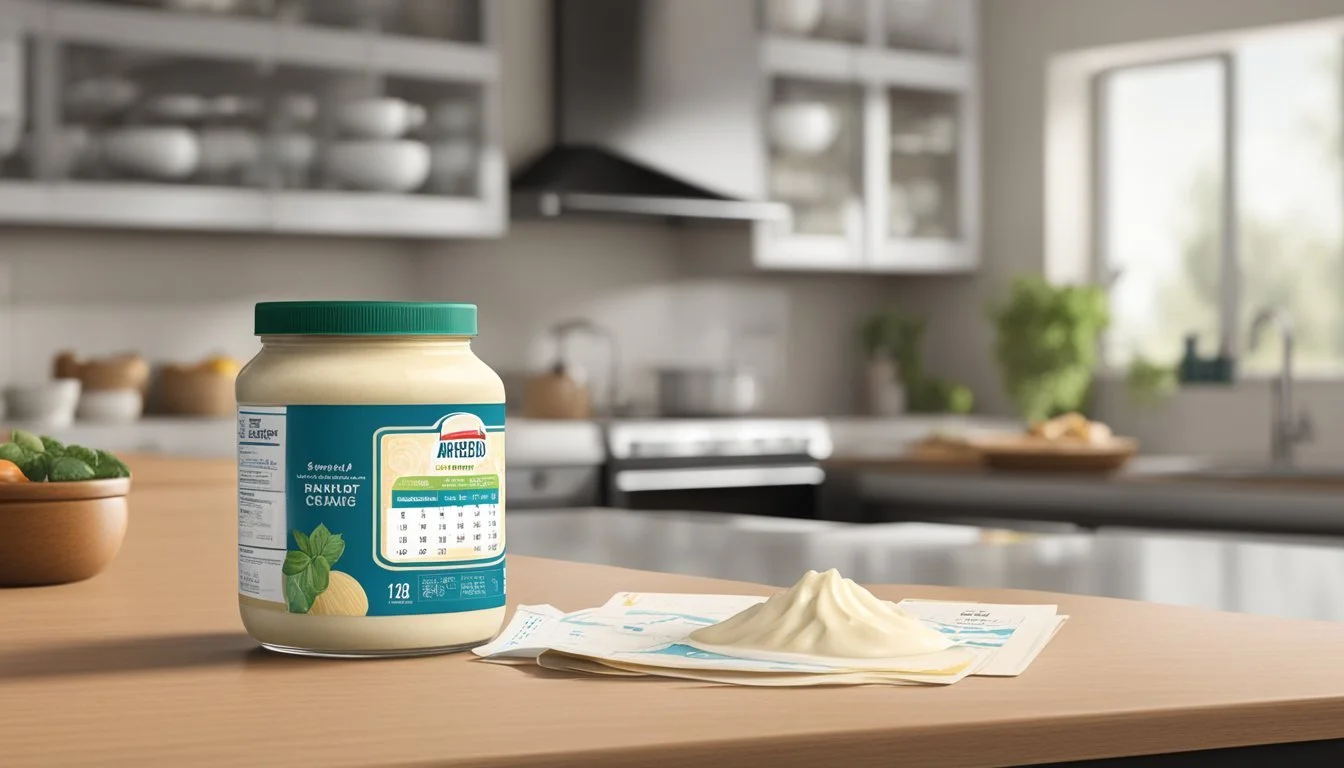How Long Does Alfredo Sauce Mix Last?
Understanding Shelf Life and Storage
Alfredo sauce mix, often found in dried form as a convenient option for home-cooked Italian meals, can be a kitchen staple for those who appreciate a rich and creamy pasta sauce. The longevity of Alfredo sauce mix in the pantry depends on several factors, including the best-by date provided by the manufacturer, the composition of the ingredients, and storage conditions. Under the right circumstances, an unopened package of Alfredo sauce mix can last well beyond its printed date, maintaining its quality and flavor.
once opened, the powder should be used relatively quickly to ensure its taste remains as intended. Storage methods play a crucial role in preserving the mix's shelf life. Keeping it in a cool, dry place and sealed tightly can help prevent exposure to moisture and other contaminants that could compromise the mix's integrity and shorten its usable period. They can recognize that Alfredo sauce mix's shelf life may vary from one brand to another and that storage recommendations on the packaging should always be followed for best results.
Understanding Alfredo Sauce
Alfredo sauce is a rich, creamy pasta sauce with a simple yet distinctive composition of ingredients. Its origins are rooted in Italian cuisine, and it has become a staple in many dishes around the world.
Key Ingredients in Alfredo Sauce
Cheese: The primary cheese used is Parmesan, which provides the sauce with a sharp and salty flavor profile.
Cream: Heavy cream lends Alfredo its characteristic texture, contributing to the sauce's creamy and thick consistency.
Butter: Acts as an emulsifier and flavor base, butter is essential for a smooth finish and adds a hint of richness.
Garlic: While not present in the traditional recipe, garlic is often added for additional depth and flavor.
Herbs and Black Pepper: A pinch of black pepper and optional herbs like parsley can be included for aroma and taste.
It's important to note that Alfredo sauce made from scratch generally lacks preservatives, affecting its freshness and shelf life compared to commercial varieties.
Origin and Uses of Alfredo Sauce
Italy: Alfredo sauce hails from Italy, where it was first created as a simple blend of butter and Parmesan.
Pasta Sauce: It is primarily known as a pasta sauce, often served over fettuccine pasta for the classic dish Fettuccine Alfredo.
Creamy Sauce: The creamy sauce has gained popularity for its velvety texture and rich flavor, versatile enough to be used in a variety of recipes beyond pasta, such as casseroles and pizza toppings. (What wine goes well with pizza toppings?)
The original Alfredo sauce, made without cream, showcases the importance of using high-quality cheese and butter to achieve a luxurious sauce embraced by Italian tradition and international cuisine.
Freshness and Quality Indicators
When considering the freshness and quality of Alfredo sauce, one should assess various indicators such as color, smell, taste, and consistency to determine its suitability for consumption.
Identifying Fresh Alfredo Sauce
Fresh Alfredo sauce should exhibit a uniform creamy white color, without any discolorations. Smell is a powerful indicator of freshness; the sauce should have a rich and inviting aroma of cream and cheese without any sour or off-putting odors. When tasted, it should carry the expected balance of savory cheese and cream flavors without any bitterness or sourness. The consistency should be smooth and even, with no separation or curdling of ingredients.
Signs of Spoilage
Alfredo sauce that has gone bad will show clear signs of spoilage. Discoloration, such as an odd-looking color, is a visual cue—any tinges of yellow or green could indicate the growth of mold. The presence of mold itself, usually appearing as blue, green, or black spots, is a definitive sign that the sauce should not be consumed.
Spoiled Alfredo sauce might emit an unpleasant, sour smell, which differs markedly from the fresh creamy scent. The taste of the sauce, although it is not recommended to taste it if spoilage is suspected, will be off and possibly tangy. Lastly, the consistency can change, with the sauce becoming either too thick or conversely, watery and separated, indicating that it has gone bad.
Storage Practices for Alfredo Sauce
Proper storage of Alfredo sauce is essential to maintain its freshness and extend shelf life. It's important to use airtight containers for refrigeration and freezer-safe ones for freezing.
Refrigerating Alfredo Sauce
When refrigerating Alfredo sauce, store it in an airtight container to prevent the absorption of flavors from other foods and to minimize the risk of spoilage. For best results, one should refrigerate homemade Alfredo sauce promptly after cooking. Store-bought Alfredo sauce can be stored in its original jar if unopened, or transferred to an airtight container once opened.
Recommended refrigeration time:
Homemade Alfredo sauce: 3 to 4 days
Store-bought Alfredo sauce: Up to 1 week after opening
Freezing Alfredo Sauce
Alfredo sauce can also be frozen for long-term storage. Use a freezer-safe container such as Tupperware, a Pyrex dish, or a tightly sealed glass jar. Before placing the container in the freezer, make sure to leave some space at the top as the sauce will expand when it freezes. It's helpful to label the container with the freezing date for future reference.
Optimal freezing time:
For both homemade and store-bought: Up to 3 months
Storing Homemade Alfredo Sauce
When storing homemade Alfredo sauce, one should let it cool to room temperature before placing it in either the refrigerator or freezer to maintain quality. Always use proper storage containers—glass is preferred for its non-reactive properties, but BPA-free plastic containers are a suitable alternative. To preserve texture and flavor, avoid frequent temperature changes by thawing the sauce in the refrigerator overnight when ready to use.
Alfredo Sauce Shelf Life
Understanding the shelf life of Alfredo sauce is crucial for maintaining its flavor and ensuring it's safe for consumption. The preservation duration varies significantly between store-bought and homemade variants due to differences in ingredients and preservative use.
Shelf Life of Store-Bought Alfredo Sauce
Store-bought Alfredo sauce typically includes preservatives that prolong its shelf life. An unopened jar of Alfredo sauce can last:
Pantry: Up to 6 months past the printed date.
Refrigerator (after opening): 1-2 weeks.
Once opened, the sauce should be kept in the refrigerator to maintain its quality and safety. It's important to adhere to storage recommendations to ensure that the sauce remains consumable.
Shelf Life of Homemade Alfredo Sauce
Homemade Alfredo sauce does not contain artificial preservatives, thus it has a shorter shelf life:
Refrigerator: 3-4 days.
After four days, the quality of homemade Alfredo sauce may degrade, making it less desirable or safe to eat. Consumers should examine homemade sauce closely before use, observing changes in smell, taste, and texture to avoid possible foodborne illness.
Safe Consumption and Reheating Tips
When dealing with Alfredo sauce, it is crucial to identify signs that the sauce is still safe to eat and understand effective reheating techniques to maintain quality and prevent foodborne illness.
Determining Sauce Safety for Consumption
Temperature: Alfredo sauce should be refrigerated within two hours of cooking to prevent the growth of bacteria. Bacteria can multiply rapidly at temperatures between 40°F and 140°F, often leading to food poisoning if consumed.
Expiration: A jar of unopened Alfredo sauce can last 6-8 months in the fridge, but once opened or if homemade, it should be consumed within 3-5 days. Signs that the sauce has expired include an off smell, color change, or visible mold.
Best Methods to Reheat Alfredo Sauce
Preventing Graininess: Alfredo sauce can become grainy when reheated improperly. To avoid this, reheat the sauce slowly and stir constantly to re-emulsify the fats and liquids.
Maintaining Consistency: If the sauce has thickened while in the fridge, adding a small amount of milk or water while reheating can help regain the correct consistency without compromising flavor.
Reheat Methods:
Stovetop: Heat the sauce over low heat, stirring frequently.
Double Boiler: Gently reheat the sauce by placing it in a heatproof bowl above simmering water, stirring occasionally.
Oven: Heat the sauce at 350°F in an oven-safe dish until warm, which is effective for both the sauce alone and when mixed with pasta. Add a little milk or water to keep it moist.
The key is to reheat Alfredo sauce at a low temperature and avoid rushing the process, which could lead to uneven heating, separation, or burning.
Handling and Preventing Alfredo Sauce Waste
Alfredo sauce, a dairy-rich accompaniment for pasta dishes, often leads to leftovers. To minimize waste and retain the freshest ingredients, safe storage combined with innovative culinary use is key.
Utilizing Leftover Alfredo Sauce
To make the most of leftover Alfredo sauce, one should store it properly in the refrigerator, where it will maintain quality for about 3-4 days. Freezing is also a viable option, extending its lifespan up to three months. When stored in a freezer-safe container, the sauce should be cooled first, and ample space should be left for expansion. To prevent the separation of ingredients like heavy cream, a gentle reheating on the stovetop is preferable, ideally using a double boiler technique to re-emulsify the sauce.
Creative Recipes for Excess Sauce
Leftover Alfredo sauce can be a versatile ingredient in the kitchen:
Pasta Reinvention: Transform plain pasta dishes by incorporating Alfredo sauce with added pepper and spices for a new flavor profile.
Protein Pairing: Enhance the nutrition of cooked chicken or seafood by draping them with the reheated sauce for a satisfying meal.
Vegetable Dip: Use the sauce as a rich base for a vegetable dip, possibly adding herbs or cheese for an additional flavor kick.
By following these suggestions, one ensures that no Alfredo sauce goes to waste, nutrition is maximized, and meals remain delightfully diverse.
Alfredo Sauce and Health Considerations
When considering the health implications of Alfredo sauce, one must evaluate both the nutritional content and how it aligns with specific dietary needs, such as dairy sensitivities.
Nutritional Aspects of Alfredo Sauce
Alfredo sauce is a rich blend primarily composed of cream, cheese, and butter, making it a calorie-dense option. These dairy products contribute significant amounts of fat, particularly saturated fat, and calories. Here's a brief look at the nutritional profile of a typical Alfredo sauce per serving:
Calories: Approximately 110-120
Total Fat: 10-12g
Saturated Fat: 6-7g
Cholesterol: 30-40mg
Sodium: 300-400mg
One should enjoy Alfredo sauce in moderation, especially within a balanced diet that includes a variety of other nutrients such as fiber, vitamins, and minerals not provided by the sauce.
Dealing with Dairy Sensitivities
Alfredo sauce's primary ingredients are all dairy products, which can be problematic for individuals with lactose intolerance or dairy allergies. Symptoms of these sensitivities can include bloating, gas, diarrhea, and more severe allergic reactions. Individuals with dairy sensitivities have a few options:
Lactose-Free Alternatives: Products made with lactose-free milk or cheese can reduce symptoms.
Dairy Substitutes: Plant-based alternatives like cashew, almond, or soy can mimic the creaminess without containing lactose.
Portion Control: Introducing small amounts of dairy may be tolerable for some people, depending on individual sensitivity levels.
Incorporating dairy sensitives into the dietary considerations of Alfredo sauce allows for more inclusive choices without sacrificing flavor or experience.
Conclusion
When assessing the longevity of Alfredo sauce mix, quality is paramount. For unopened store-bought dry mixes, they typically last well past the printed expiration date if kept in a cool, dry place. Once prepared or opened, however, the sauce should maintain its texture and flavor for a mere 4 to 7 days in the refrigerator.
To ensure safety and quality, be proactive; store Alfredo sauce promptly after use. If leftover sauce has been at room temperature for over 4 hours, it's recommended to discard it to prevent bacterial growth.
Here are recommendations for maximal shelf life:
Refrigerate promptly: Keep homemade or opened packaged sauce refrigerated at all times.
Freeze for longer storage: Alfredo sauce can be frozen, and for best results, should be used within 3 months.
Inspect before use: Check for changes in color, odor, or separation as indicators of spoilage.
By following these guidelines, one ensures that the Alfredo sauce served is both delicious and safe for consumption.










